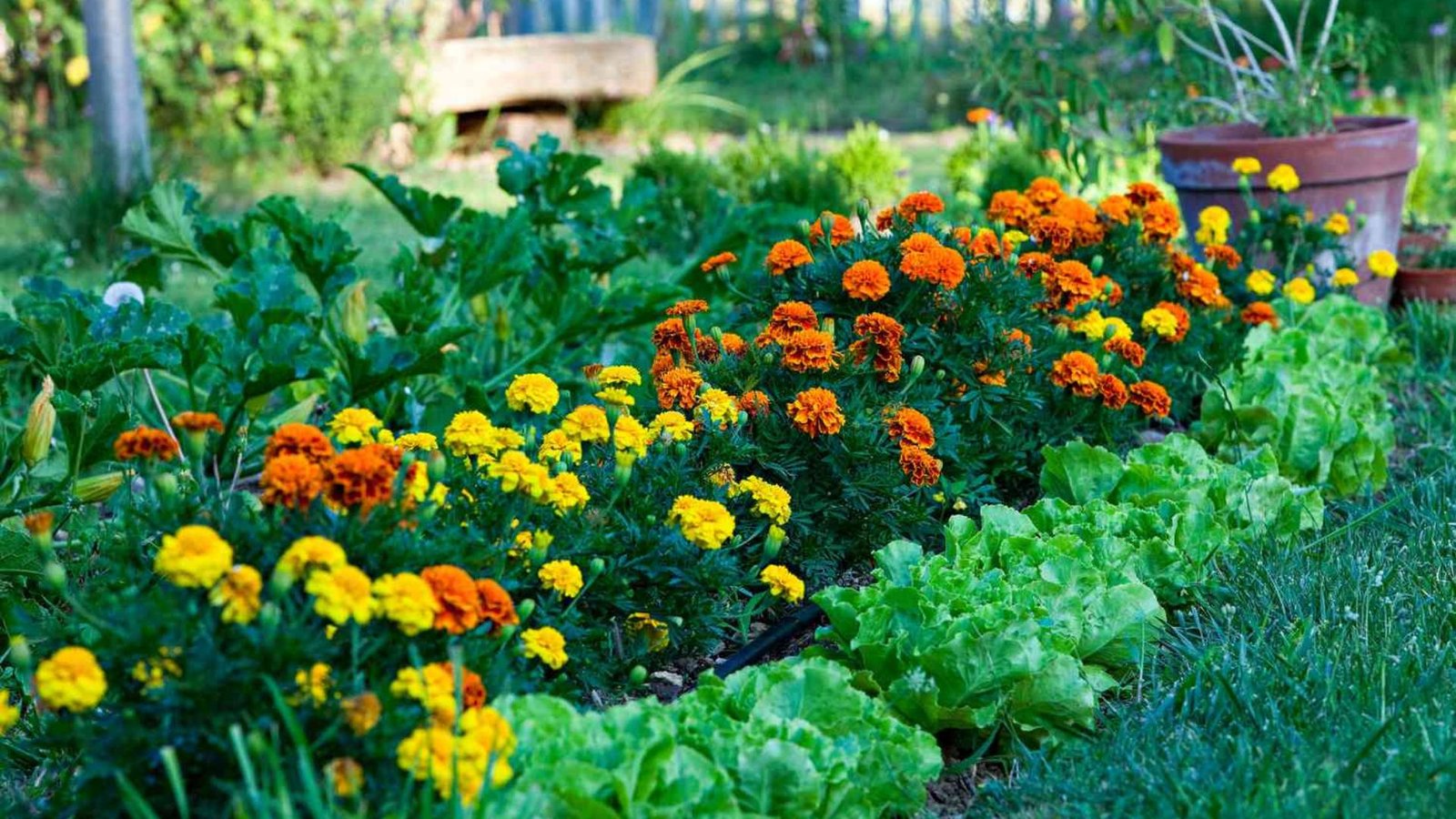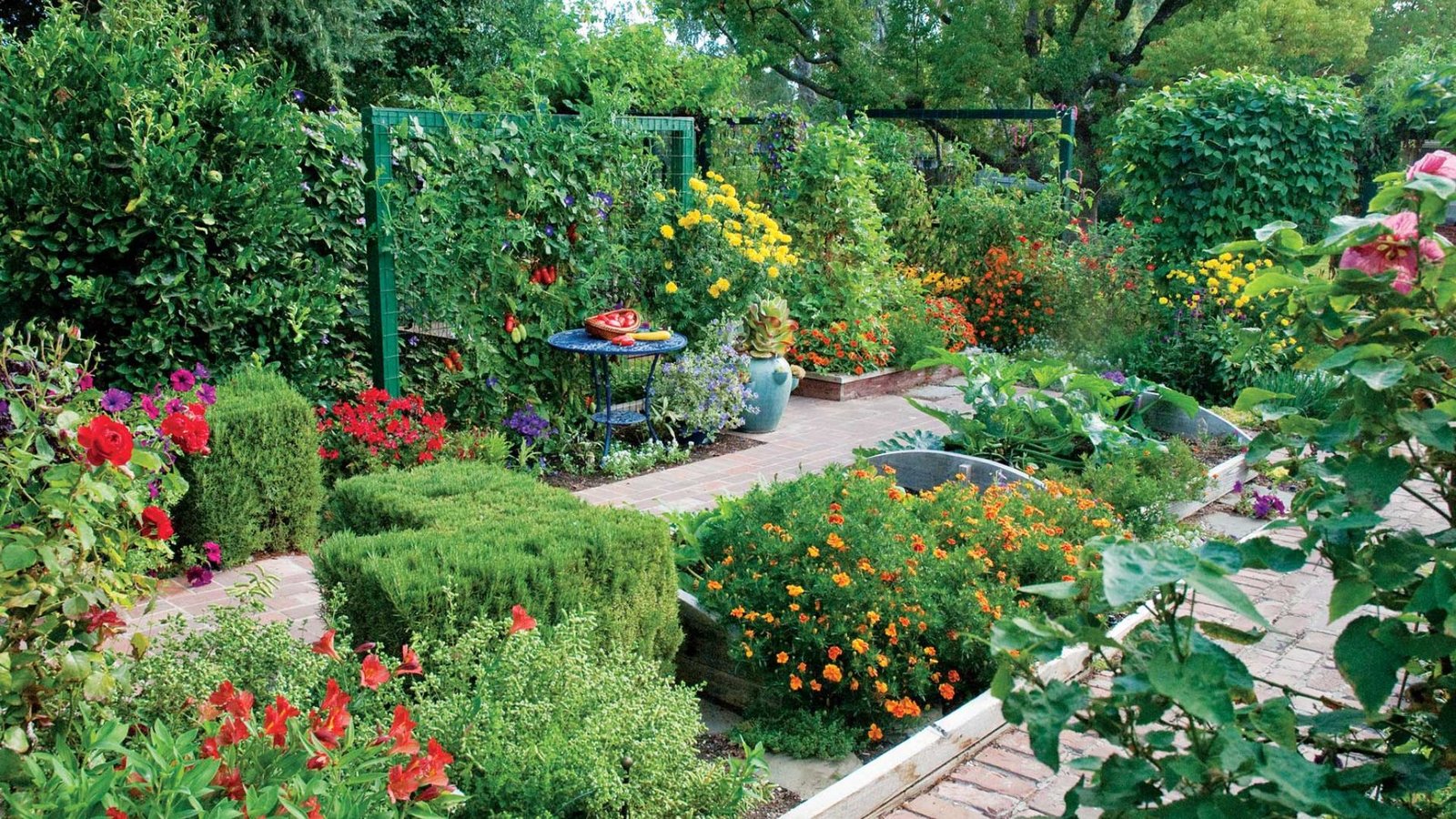Creating a flower garden with edible companions is a delightful way to combine aesthetics with practicality. Imagine a garden where colorful blooms not only please the eye but also provide fresh herbs, fruits, and vegetables for your kitchen. In this guide, we will explore tips and techniques to help you design and cultivate a flower garden with edible companions that thrives throughout the seasons.

Selecting Edible Plants for Your Garden
Choosing the right edible plants ensures a harmonious and productive garden:
1. Herbs for Flavor and Fragrance
- Basil and Mint: Plant basil and mint among your flowers for their aromatic leaves that add flavor to dishes.
- Rosemary and Thyme: These perennial herbs provide evergreen foliage and enhance the garden’s scent.
2. Fruits for Color and Taste
- Strawberries: Grow strawberries in hanging baskets or containers for juicy fruits and beautiful blooms.
- Blueberries: Incorporate blueberry bushes for their ornamental value and nutritious berries.
3. Vegetables for Variety
- Lettuce and Kale: Plant leafy greens like lettuce and kale in between flower beds for continuous harvesting.
- Tomatoes and Peppers: Compact varieties of tomatoes and peppers add color and provide fresh produce.
Designing Your Flower Garden Layout
Plan the layout to maximize space and aesthetics in your edible flower garden:
4. Companion Planting
- Beneficial Pairings: Pair plants that complement each other, such as marigolds with tomatoes to deter pests.
- Vertical Planting: Grow climbing beans or cucumbers on trellises to save space and create a lush backdrop.
5. Raised Beds and Containers
- Accessibility: Use raised beds or containers for easy access and to control soil quality.
- Mixing Plants: Combine flowers and edibles in the same container or raised bed for a visually appealing arrangement.
Caring for Your Garden
Maintain a healthy and thriving garden with proper care and attention:
6. Soil Preparation
- Nutrient-Rich Soil: Amend soil with compost or organic matter to provide essential nutrients for plant growth.
- pH Balance: Test soil pH and adjust as needed to optimize conditions for both flowers and edibles.
7. Watering and Feeding
- Watering: Water plants deeply and regularly, especially during dry periods, to ensure proper hydration.
- Feeding: Apply organic fertilizers or compost tea to nourish plants and promote robust growth.
Harvesting and Enjoying Your Garden
Enjoy the fruits of your labor with regular harvesting and culinary experimentation:
8. Regular Harvests
- Edible Flowers: Harvest flowers like nasturtiums and calendula for salads or garnishes.
- Herbs: Clip herbs frequently to encourage bushy growth and use fresh in cooking or drying for later use.
9. Culinary Delights
- Creative Recipes: Explore new recipes that incorporate fresh herbs, fruits, and vegetables from your garden.
- Family Enjoyment: Share meals with family and friends, showcasing the flavors and beauty of your edible flower garden.
Conclusion
Designing and cultivating a flower garden with edible companions offers a wealth of benefits, from enhancing your landscape with vibrant blooms to providing fresh, homegrown produce and herbs. By carefully selecting plants, planning your garden layout, and providing proper care, you can create a beautiful and functional space that nourishes both body and soul. Start transforming your outdoor space into a haven of beauty and flavor with these tips for creating a flower garden with edible companions today.











